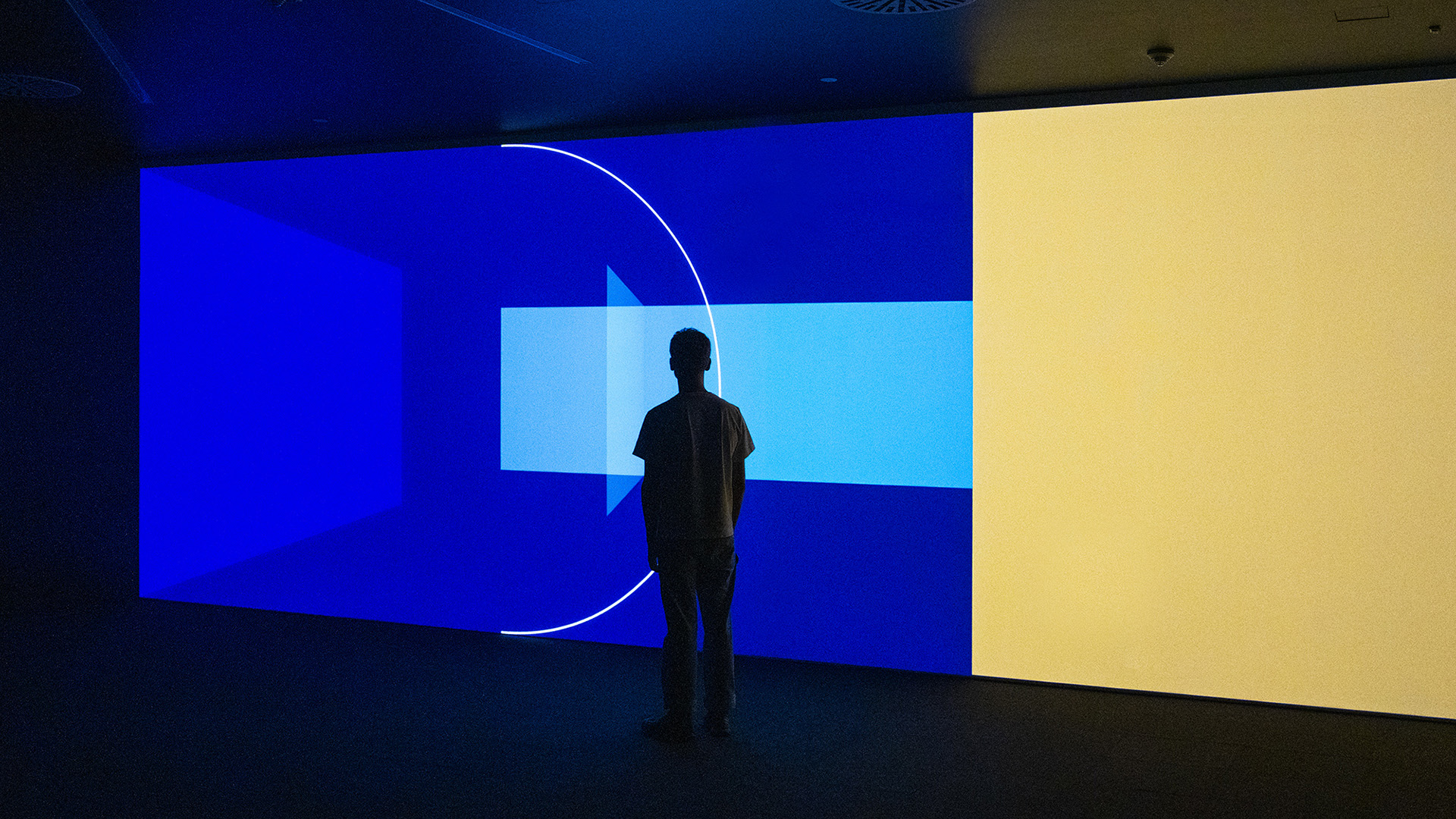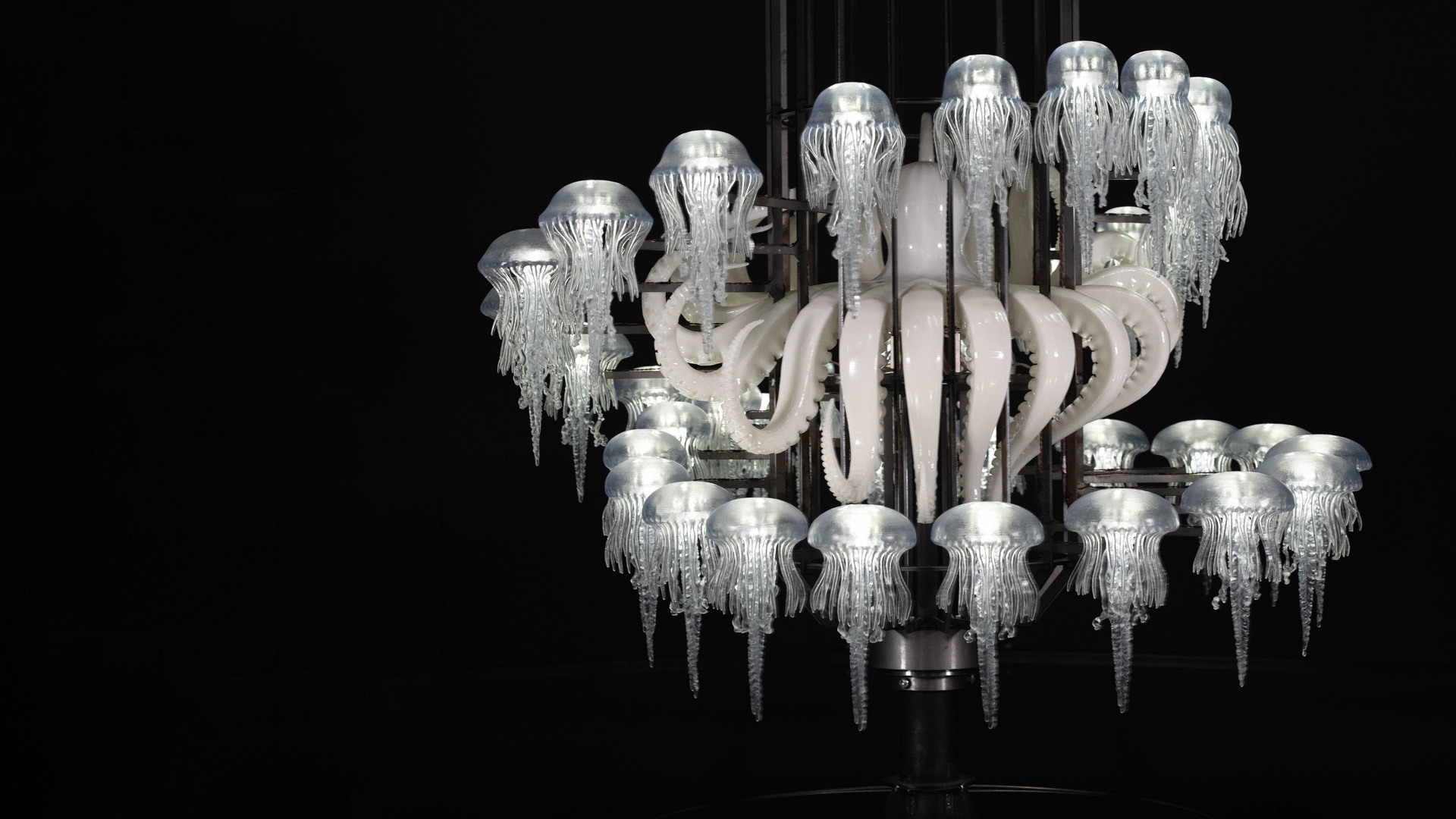Blog
Looking From Afar: On Olivo Barbieri
8 September 2023 Fri
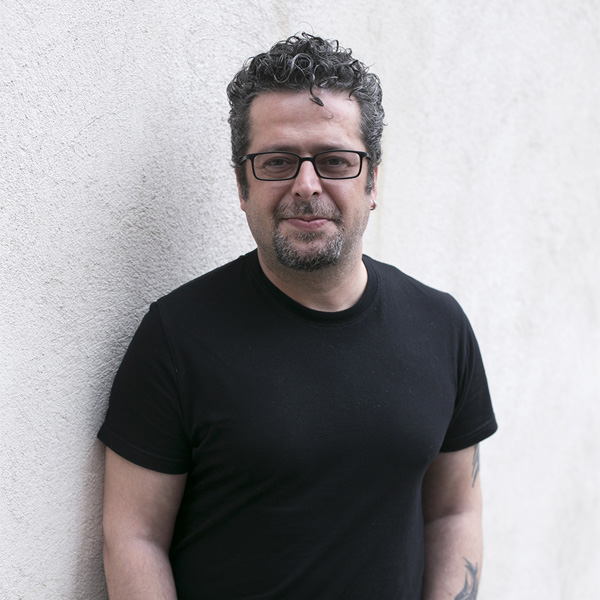
FIRAT ARAPOĞLU
firat.arapoglu@gmail.com
World-renowned Italian artist Olivo Barbieri came to İstanbul last June for a talk at the CI Bloom art fair, and I got a chance to have an enlightening and pleasant conversation with him on June 1st. For the last fifteen years or so, Barbieri has been taking aerial photographs of metropolises and megalopolises from a helicopter. He calls this ongoing project "Site Specific". We talked about these shots, in which the artist alienates familiar cityscapes, and consequently questions the limits of perception. Furthermore, he examines the relationship between man and nature using new technological possibilities.
Olivo Barbieri uses tilt-shift photography (miniature faking) to simulate shallow depth of field. Thus, he creates still photographs that seem like miniatures of real landscapes. His technique is based on simulating the shallow depth of field effect in macro photography by tilting the angle of the lens to the backplane of the camera, thereby creating gradually blurred areas at the top and bottom edges or the left and right edges of the captured image. Before going forward with his work, it would be helpful to talk briefly about the artist's career.
Barbieri studied photography at the Faculty of Arts, Humanities and Cultural Heritage of the University of Bologna, and mainly after 1971 his interest in photography deepened. Initially taking photographs with ersatz lights, the artist started to take part in various exhibitions in Italy and abroad from 1978 onwards. As of 1989, he traveled regularly to the Far East, especially to China. Barbieri began to focus on tilt-shift photography in the early 1990s and his first extensive series using this technique was exhibited at the Venice Biennale in 1993. He has photographed major cities around the world, including Rome, New York, and Tokyo.
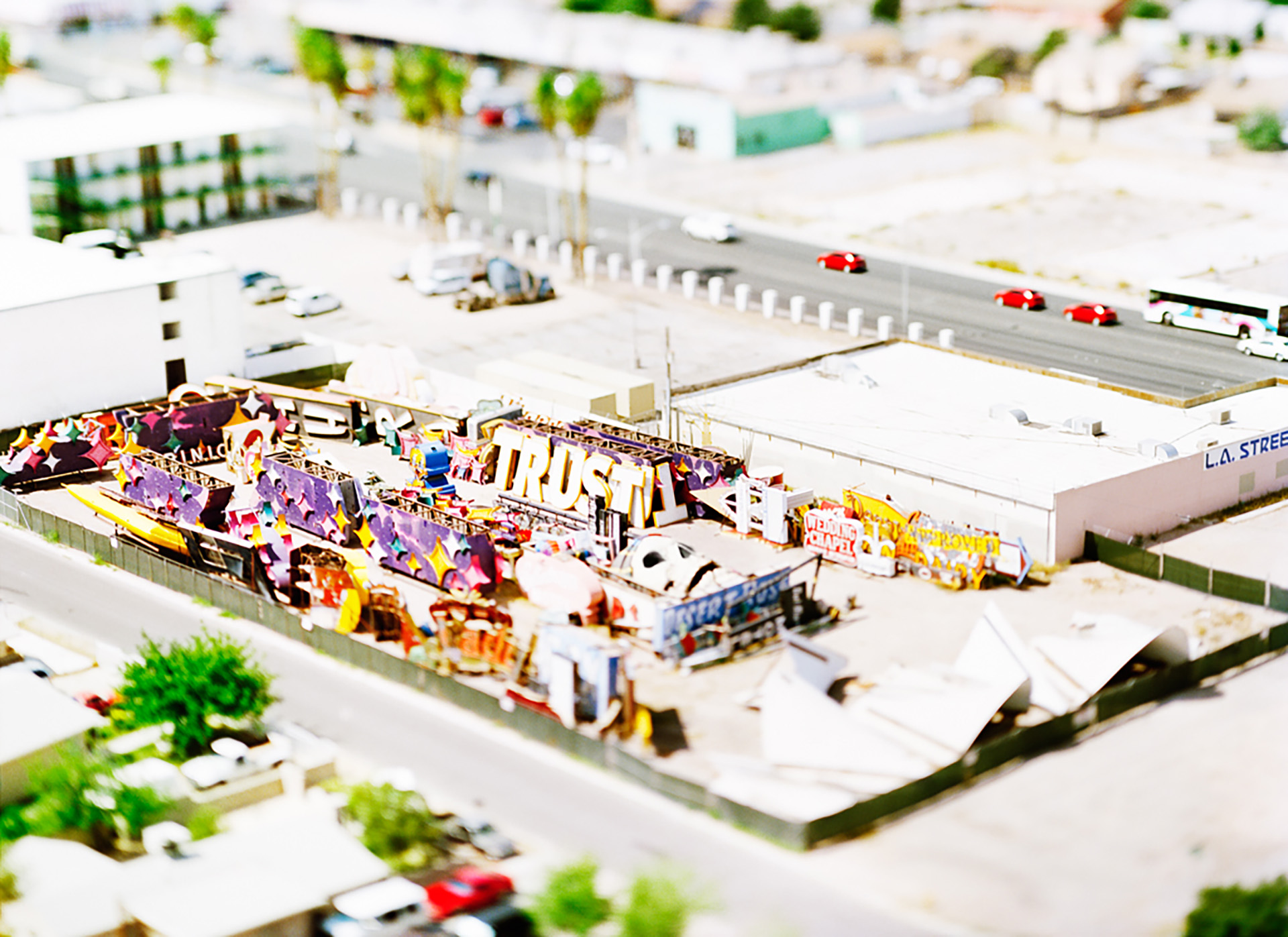
Olivio Barbieri, mekâna özgü_LAS VEGAS 07
Barbieri continued to use the tilt-shift technique in his later works, including “Night Landscapes”, "Alps- Geographies and People" and the "Site Specific" series. In "Alps - Geographies and People" (2012), he photographed the Alps, where he created a sense of grand scale and majesty. While in the "Site Specific" series, he photographed important landmarks around the world to create a sense of abstraction and movement as well as to criticize the structure of the urban expansion.
Barbieri's work has been shown in solo and group exhibitions around the world, he has participated in the Venice Biennale five times besides his works are featured in major collections such as the Centre Pompidou, the San Francisco Museum of Modern Art, and the Museum of Contemporary Art Chicago. Barbieri is the recipient of numerous awards, and he is recognized as one of the world's leading photographers.
So, what can be said briefly about the series of the artist and techniques used by him? Let's start with the tilt-shift technique and aerial photography. For example, Olivo Barbieri's "Site Specific" series is a collection of aerial photographs shot over cities around the world. This series started to be produced in 1999 and reached a mature point in 2012. In these photographs, Barbieri used the abovementioned technique to create a miniature-like effect, with gradual blurring of the top and bottom edges or the left and right edges of the images. This technique creates the illusion that the cities are models or miniatures.
On the other hand, Barbieri's use of aerial photography naturally lets him capture the bird's-eye view of a city, and this viewpoint allows him to develop a unique perspective regarding the urban landscape. Because, only in this way can the city be seen as a whole, and the derivatives of images and human-city relations, which are basically invisible from a low eye level, be identified. In essence, the "Site Specific" series is a kind of meditation on the nature of urban space, and the effect of the miniature-like image produced by the tilt-shift technique creates a sense of separation and alienation from a familiar image in the viewer. This feeling of separation allows us to see a city in a novel way and to question our relationship with it.
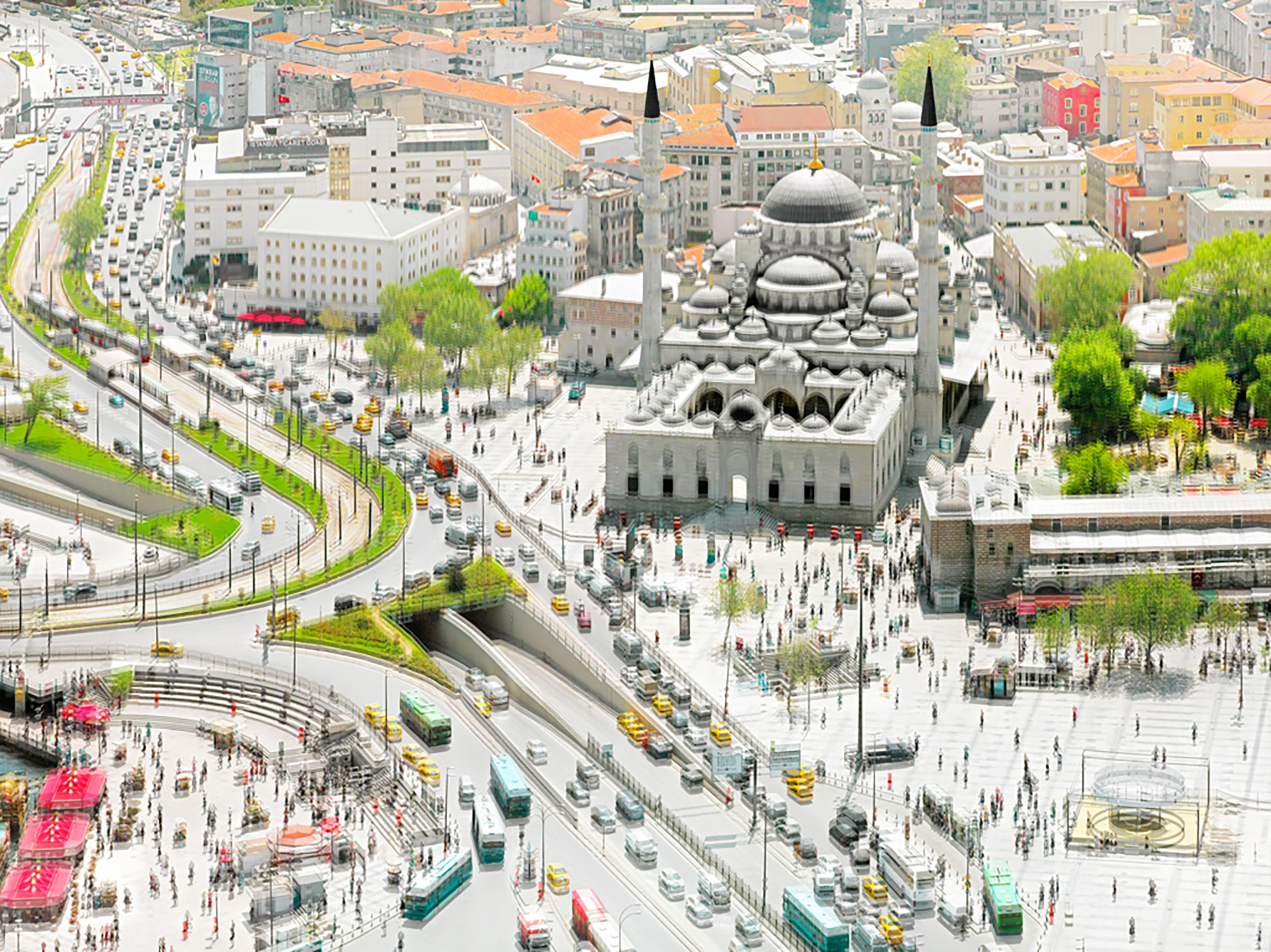
Olivio Barbieri, mekâna özgü_ISTANBUL 11
In addition to his practice in aerial photography and the use of tilt-shift lenses, Barbieri employs other techniques to manipulate the initially perceived reality of the photographs. The erasure of color, shape, and certain specific details in the form can be considered examples of such techniques which increase the expressive power of the overall sense of abstraction in the works. What does it mean to look at the world from above and where is this perspective evolving?
The bird's-eye view image has a long and complex history, and for centuries cartographers and soldiers have used it to gain strategic advantage. Whereas in the 20th century, with the advent of airplanes and helicopters, the bird's-eye view image became increasingly common. For example, drones allow us to capture bird's-eye views today, more easily and more conveniently than ever before. However, it should not be assumed that the intent here is always positive: On the one hand, drone shots are documenting the beauty of the world, assisting in plans of urban development, and monitoring natural disasters, yet on the other hand, through drones, people are being spied on, and targeted. Furthermore, these vehicles are exploited in warfare.
In other words, drone footage and aerial photography are used simultaneously to create detailed maps of remote areas that are difficult and impossible to map from the ground as well as to gather intelligence and destroy targets by militaries. In due course, as Olivo Barbieri pointed out in our CI Bloom talk, the possibilities for positive and negative uses of drone footage are many. The future of this imagery will depend on how humanity chooses to use it. It is one of these possibilities that has motivated Barbieri: What does it mean to look at a city from above?
In art history, French Impressionist painters such as Camille Pissarro were fascinated by the way of looking at the city from above. These artists loved the possibility of seeing buildings, streets, and people as a single, unified model from the top of a building. Such images reflected the dynamic energy of the city. The desire and practice of seeing the city, nature, and people from a higher viewpoint was a result of the efforts to understand our place in the world and to see the bigger picture. Barbieri's photographs capture the large-scale image of the landscape on the one hand and the details of life on the other. The city is seen as a whole but a connection with people and objects is still existent.
In addition to cities, natural landscapes are also of interest to the artist. Two important series can be mentioned here: "Alps - Geographies and People" and "Capri". Both series focus on the relationship between humans and nature. In "Alps - Geographies and People", Barbieri photographed the Alps from above to create a miniature-like effect, making visible the vastness and scale of the mountains as well as the human intervention in nature. Using a similar technique, the artist photographed the island of Capri and examined the transformation of natural places into venues of spectacle. Yet these areas are no longer the pristine wilderness they once were.
Thus, Barbieri's photographs tell us about the complex relationship between man and nature. We have the power to transform natural places, but we also know the impact of these transformations. These photographs are like a call to action for us to be more careful about our impact on the environment. On the one hand, these areas have become more accessible to tourists, but they have also had a negative impact on the environment. Transportation routes have fragmented the natural landscape and the presence of people has caused air pollution and water pollution. A region may become more popular as a tourist destination, but this also changes the character of the area. Barbieri makes us think about the need to find ways to live in harmony with nature rather than exploiting it.
On the other hand, Olivo Barbieri's post-production and image-processing operations are also important aspects of his production since he uses these techniques to create a unique and stylized aesthetic that is instantly recognizable. For example, he uses bright and saturated colors that create a sense of delusiveness. This contrasts with the more natural colors typically used in photography. Barbieri also uses image processing techniques to create a sense of depth and perspective. This gives his photographs a kind of otherworldly quality and turns them into dreamlike images.
Barbieri always experiments with new techniques and finds new ways to expand the perception of the viewer. It is noteworthy how he adjusts the colors in his photographs, for example making them brighter, more saturated, or muted, and changing the color balance. He also adds or removes elements and blurs or sharpens certain parts of the photographs. This creates a sense of depth and perspective and even makes his photographs more abstract.
At the end of our conversation, Barbieri, who himself lives in an earthquake zone, expressed his sadness about the earthquakes that hit Turkey. Barbieri, who has also photographed the aftermath of earthquakes in the past, documented the remains of collapsed buildings in Italy. In these works, where we feel the sense of loss and destruction, he still tries to convey the resilience of the human spirit. Isn't this precisely the power of art after all?
ABOUT THE WRITER
Fırat Arapoğlu is an art historian (PhD)/art critic & independent curator. He lives and works in İstanbul. He has been working in Economic, Administrative and Social Sciences Faculty, Department of Social Sciences, Altinbas University as an Assistant Professor. He curated numerous exhibitions in Turkey and abroad, most recently including: “Future Unforgettable”, Krassimir Terziev solo show (2019, Versus Art Projects, İstanbul), The Fifth Agreement, Esra Satiroglu solo show (2019, Summart, İstanbul), and “Simbart One-Day” solo show programmes. He co-curated 3rd International Canakkale Biennale and 3rd and 4th International Mardin Biennales. He has written articles in national and international art magazines such as Genç Sanat, Art-İst Modern & Actual, ICE, ARTAM, Art Unlimited, Critical Culture, RH+, İstanbul Art News and Flash Art. He has also written articles in national newspapers called Birgün, Cumhuriyet and SOL. He has also written national and international symposium proceedings about art and art education and has been giving lectures in İstanbul Modern Art Museum, Moda Sahnesi, Narmanli Sanat, İstanbul Bilgi University. He is the 2018-2020 President of AICA- Turkey (International Association of Art Critics-Turkey).

